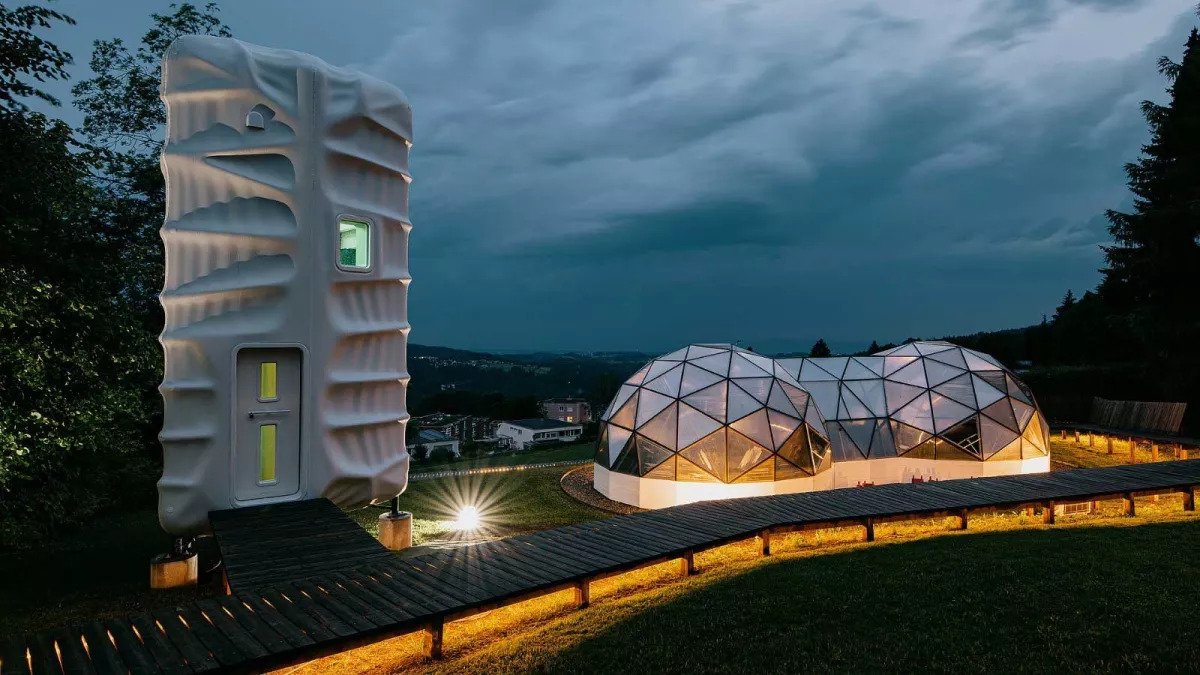Switzerland has created the world’s tallest house printed on a 3D printer. Students from 6 to 18 years old took part in its creation. There they will conduct educational research that may be useful when exploring the Moon.

Printed House for Space Mission
A building printed from plastic on a 3D printer was installed in a Swiss experimental park. The authors of the project were students from 6 to 18 years old who are engaged in the programs of the Institut auf dem Rosenberg. And the Danish architectural firm SAGA Space Architects helped to bring it to life.
Students were inspired by SpaceX spacecraft. The design of the three-storey building created by them really resembles Dragon. And this similarity is not accidental. It has everything necessary for two astronauts to live and conduct research on the surface of the moon for a long time.
The creators of the building claim that it is the tallest of the 3D-printed structures so far. This dome structure rises 7 meters above the ground. Until now, most of such large building structures have been created using additive technologies from concrete. However, representatives of the Institute believe that the choice of plastic is justified.
Students will conduct lunar research
The project was dedicated to the 53rd anniversary of the landing of people on the Moon. Therefore, despite the large size of the space house, it was designed so that it fits in the cargo compartment of the SpaceX Falcon Heavy rocket. And to ensure that the design could withstand the conditions of our moon, where there is a lot of ultraviolet radiation, additives were introduced into the composition of the plastic, which increased its resistance to it.
And while the house is not going anywhere, the students will use it for teaching and research. The main goal of the project is to familiarize children with the practice of space research. They also need to learn how to solve such problems together.
The institute’s management also hopes that the planned research will include the study of hardware, software, remote mission control systems and “sensory stimulation”, including light, sound and smell. Students will also take part in projects designed to simulate systems thinking and work with artificial intelligence.
According to www.space.com
Follow us on Twitter to get the most interesting space news in time
https://twitter.com/ust_magazine
